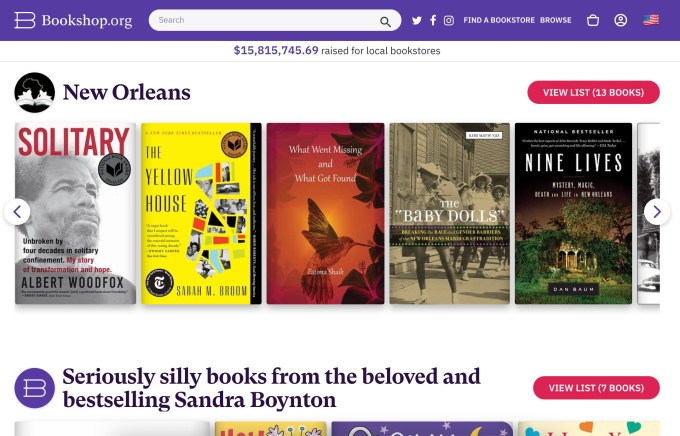Sesie Bonsi is the founder and CEO of
Bleu, a financial technology platform focused on enabling touchless payment experiences.
Funding for Black entrepreneurs in the U.S. hit nearly $1.8 billion in the first half of 2021 — a fourfold increase from the previous year. But most venture-backed startups are “still overwhelmingly white, male, Ivy-League-educated and based in Silicon Valley,” according to a study conducted by RateMyInvestor and Diversity VC.
With venture investors committing to funding Black and minority founders, alongside the growing availability of government-backed proposals, such as New Jersey allocating $10 million to a seed fund for Black and Latinx startups, can we expect to see fundamental change? Or will we have to repeat the same conversations about representation failings within VC funds?
Crunchbase examined the access to capital in the venture-backed startup ecosystem and proved that many industry leaders still worry that nothing will drastically shift. As a Black fintech founder, I believe that venture investors are making safe bets and investing in late-stage founders instead of early or even pre-seed stages.
But what about those minority founders who don’t have family, friends or connections to lean on for the first $250,000? Venture funding does remain elusive, but here are some tricks for startup founders to hack the system.
Realize you are up against an outdated system
Getting your foot in the door with new venture capitalist partners is challenging, and it is often easy for minority founders to be naive at first. I thought that reading TechCrunch and analyzing other VC deals I saw in the news would help me land multiple responses and speak the language of those who managed to score million-dollar deals for their startups. However, I didn’t receive a single response while other founders received VC investment for basic ideas.
This is something I had to learn the hard way: What you hear in the media or read on a company blog post often simplifies the process, and sometimes fails to cover the trajectory that minority founders, in particular, must follow to secure funding.
I experienced hundreds of rejections before raising $2 million to start a mobile payment platform, Bleu, using beacon technology to drive simple and secure payments. It is a huge mountain to climb and a full-time job to continuously pitch your vision and yourself to reach the first meeting with a VC fund — and that’s still miles away from a funding discussion.
These discussions then bring further biases to the surface. If you sat in the conference rooms or on those Zoom calls and heard the types of deals proposed to minority founders, you’d see how offensive they can be. Often, these founders are offered all the money they have requested — but don’t be fooled. It is usually not given all at once due to what I consider to be a lack of trust. Essentially, interval funding equates to being babysat.
Therefore, as a minority founder, you have to realize that it will be a long ride, and you will face rejections because you are at a disadvantage before even opening your mouth to pitch your idea. It is all possible, but patience is key.
Think of the worst-case scenario
Once I figured out how complicated the funding process was, my coping mechanism was to figure out how to capitalize on the business ideas I already had in place in case I never received any VC funding.
Think: How could you make money without an institutional investor, friends, family or internal networks? You’ll be surprised by your entrepreneurial thirst for success when you’ve experienced 100 rejections. This is why minority businesses caught in these testing situations can quickly gain the upper hand, whether through ancillary and side businesses or crowdfunding over GoFundMe and Kickstarter.
Although generally considered non-essential, ancillary companies do provide a regular flow of income and services to assist your core business idea. Most importantly, a recurring revenue stream outside your core business demonstrates to investors that you can create valuable products and acquire loyal customers.
Make sure to find a niche market and carry out surveys with potential clients to find out what specific needs they have. Then, build a product with their feedback in mind and launch it to beta clients. When you publicly release the product, find resellers to keep internal headcount low and generate recurring revenue.
Don’t take ancillaries lightly, though; they are not just a side business. There can be payment issues if you get hooked on them for revenue, distractions from clients or partners wanting custom requests, and supply chain problems.
In my case, I built a point-of-sale (POS) software platform to sell to merchants, which gave me a different revenue stream that could integrate with Bleu’s payment technology. These ancillary businesses can help fund your core business until you manage to plan how to launch fully or source further funding.
In 2019, The New York Times published an article headlined “More Start-Ups Have an Unfamiliar Message for Venture Capitalists: Get Lost.” It highlights how more and more entrepreneurs shunned by the VC funding route are turning to alternatives and forming counter-movements. There are always alternatives to look at if the fundraising process is proving to be too arduous.
Make serious headway with accelerators
Accelerators allow ventures to define their products or services, quickly build networks and, most importantly, sit at tables they wouldn’t be able to on their own. Applying to accelerators as a minority founder was the real turning point for me because I met a crucial investor who allowed us to build credibility and open up to new networks, investors and clients.
I would suggest looking out for accelerators explicitly searching for minority founders by using platforms such as F6S. They match you with accelerators and early growth programs committed to innovation in various global industries, like financial technology. That’s how I found the VC FinTech Accelerator in 2016, where one-third of founders were from minority backgrounds.
Then, Bleu earned a spot in the 2020 class of the IBM Hyper Protect Accelerator dedicated to supporting innovative startups in fintech and health tech industries. These types of accelerators offer startups workshops, technical and business mentorship, and access to a network of partners, customers and stakeholders.
You can impress accelerators by creating a pitch deck and a company video less than two minutes long that shows your founder and the product, and engaging with the fintech community to spread the news.
The other alternative to accelerators is government funds, but they have had little success investing in startups for myriad reasons. It tends to be a more hands-off approach as government funds are not under significant pressure from limited partners (LPs, either institutional or individual investors) to perform.
What you need as a minority founder is an investor who is an active partner but, with government-backed funds, there is less demand to return the capital. We have to ask ourselves whether governments are really searching for the best minority-owned startups to help them get sufficient returns.
Tap into foreign markets
There are many unconscious social stigmas, stereotypes and unseen biases that exist in the U.S. And you’ll find those cultural dynamics are radically different in other countries that don’t have the same history of discrimination, especially when looking at a team or assessing founders.
I also noticed that, as well as reduced bias, investors out of Southeast Asia, Nordic countries and Australia seemed far more likely to take risks on new contactless payment technology as cash use decreased across their regions. Take Klarna and Afterpay as examples of fintech success stories.
First, I engaged in market research and pored over annual reports to decide whether I should look abroad for funding, instead of applying to funds closer to home. I looked at Nielsen reports, payment publications, PaymentSource and numerous government documents or white papers to figure out the cash usage globally.
My investigations revealed that fintech in Australia was far ahead of the curve, with four-fifths of the population using contactless payments. The financial services sector is also the largest contributor to the national economy, contributing around $140 billion to GDP a year. Therefore, I spoke to the Australian Department of Foreign Affairs and Trade in the U.S., and they recommended some regulatory payment groups.
I immediately flew to Australia to meet with the banking community, and I was able to find an Australian investor by word of mouth who was surrounded by the demand for mobile payment solutions.
In contrast, an investor in the U.S. still using cash and card had no interest in what I had to say. This highlights the importance of market research and seeking out investors rather than waiting for them to come to you. There is no science to it; leverage your network and reach out to people over LinkedIn, too.
The need to diversify the VC industry internally
VC funding needs to become more inclusive for women and minority groups by tackling the pipeline problem and addressing the level of diversity within VC funds. All of the networks that VCs reach out to first tend to come from university programs at Stanford, MIT and Harvard. These more privileged and wealthy students are able to easily leverage the traditional and outdated networks built to benefit them.
The number of venture dollars flowing to Black and Latinx founders is dismally low partly due to this knowledge gap; many female and minority founders don’t even know that VC funding is an option for them. Therefore, if you do receive seed funding, spread the news about it within your networks to help others.
Inclusion starts at the educational level but, when the percentage of Black and minority students at these elite colleges are still low, you can see why minority representation is needed in the VC ranks. Even if representation rises by a percent, that would be a significant change.
There are increasing numbers of VC funds announcing initiatives and interest in investing in minority businesses, and I would recommend looking at these in-depth. But what about the demographics of the VC firms? How many ethnicities are present in the executive ranks?
To change the venture-backed startup ecosystem, we need to start at the top and diversify those signing the checks. Looking toward the future, it is Black-led funds, like Sequoia, or others that focus on diversity, like Women’s Venture Fund, BackStage Capital and Elevate Capital Inclusive Fund, that are lighting the way to solutions that will reflect the diversity of the U.S.
It’s up to the investor community at large to be intentional about building relationships with, and ultimately providing funding to, more women and minority-led startups.
Despite the barriers and hurdles minority founders face when searching for VC funding, more and more avenues for acquiring funding are appearing as the disparities are brought to the media’s attention.
As the outdated system adjusts, the key is to continue preparing yourself for rejections and searching for appropriate accelerators to build vital networks. Then, if you aren’t having any luck, consider what you could do with your business idea without the VC funding or turn to foreign markets, which may have a different setup and varied opportunities.

Powered by WPeMatico



